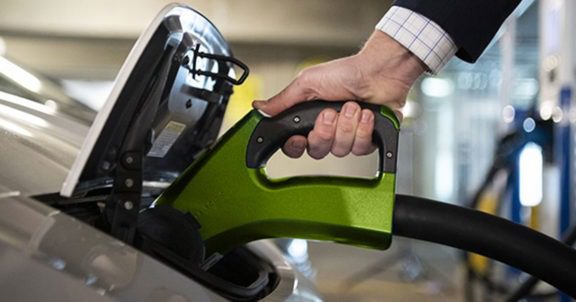Blog Post
Canadian Electric Vehicle Charging Infrastructure
By Toni Garofalo
August 13, 2019

Range anxiety is a real concern of organizations wishing to adopt an electric fleet. Years ago, when electric vehicle (EV) charging stations were few and far between, this was a valid concern. However, there’s a big push in the public and private sector to increase available EV charging options in Canada. Now, with the numerous public charging stations in place, it’s possible to make your EV aspirations a reality.
Overview Of Public EV Charging Station Infrastructure In Canada
Getting to know connectors and levels
To start, it’s important to know that EV charging is not one-size-fits-all. Instead, it’s an open and closed system that diverges from the typical gas refueling setup. If you’ve heard the words connectors and plugs in relation to EV charging, know they’re synonymous for the mechanism to join an electricity port to the station charger. Closed connectors are often made by automakers and they’re specialty crafted to work with a vehicle type. The open system offers universal connectors, that fits all or most EVs.
Another factor to keep in mind is station levels. Level 1 charging equates to plugging your car into an ordinary outlet. The time to charge differs depending on the vehicle, yet it’s about 8 km of driving range per hour, according to Plug ‘N Drive, making it ideal for overnight charging. Level 2 charging has the same voltage as a clothes dryer or oven. This level offers 30 km of range per hour. The next level is DC fast charging. It connects directly to the battery and has the ability to charge 80% of the battery in 20-30 minutes.
On the outset, it may seem tedious to keep up with the various EV connectors and station levels, yet with information-heavy digital charging station maps, such as PlugShare and ChargeHub, your drivers will have all the details they’ll need to stay on the road.
Station locations: Charging station friendly cities
There are thousands of charging stations in Canada—and the list keeps growing. Here are some of the most charging station-dense cities in Canada’s largest provinces.
Ontario:
- Toronto
- Mississauga
- Ottawa
- North York
- Old Toronto
- London
Montreal:
- Ville-Marie
- Laval
- Québec City
- Trois-Rivières
British Columbia:
- Vancouver
- Victoria
- Burnaby
- Richmond
- Surrey
Note: Home charging systems are also worth considering for fleets that take their vehicle home at the end of the day. It’s effective to charge at home, and since it’s off-peak electricity hours, it may be more cost-effective. As corporate mobility programs evolve, home charging of corporate leased or driver owned vehicles may become more dominant in the industry.
Access Networks
It’s important to also familiarize yourself with charging station networks. These refer to the companies that have installed the stations. Some of the companies are offshoots of major energy firms, some were created by automakers and others are new startup organizations. Networked stations, often called smart or connected charging stations, offer real-time usage information (whether a certain charger is in use or not). Additionally, membership is needed to access the station. Non-networked stations don’t offer real-time usage information and membership isn’t required.
The main network providers in Canada are Electric Circuit (only Quebec), FLO, Blink, SemaConnect, ChargePoint, Sun Country Highway, Greenlots, Tesla GE WattStation and Astria Technologies.